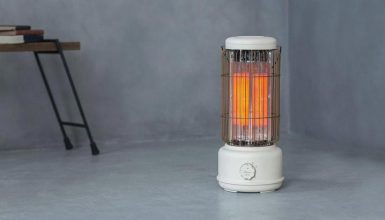Bedbugs can be a homeowner’s worst nightmare. These tiny pests can quickly infest your home, causing sleepless nights and an itchy, uncomfortable living environment. In this ultimate guide, we will explore everything you need to know about bedbug disinfestation. From understanding the life cycle of punaise de lit to effective methods of eliminating them, we will provide you with the knowledge and tools to tackle this pesky problem head-on. Early detection is key, as delaying treatment can have serious consequences. So, let’s dive into the world of bedbugs and learn how to eradicate them once and for all.
Understanding Bedbugs and Their Infestation
Bedbugs are small insects that feed on human blood, resulting in itchy, red welts on the skin. They are a common pest in households and hotels, and their infestations can be tricky to manage without proper pest management techniques. Knowing the key attributes of bedbugs and how they infest homes is essential for effective disinfestation.
The Life Cycle of Bedbugs
Bedbugs go through a life cycle consisting of eggs, nymphs, and adult stages. The eggs are small, measuring about 1 mm, and are often found in crevices and hiding places near human blood sources. After hatching, the bedbug larvae, or nymphs, require a blood meal to molt and grow. The nymphs go through several molting stages before reaching adulthood. Adult bed bugs can survive for several months without feeding, making them resilient and difficult to eliminate.
Understanding the bed bug life cycle is crucial for effective disinfestation. By targeting different stages of their life cycle, pest control methods can be more successful.
Common Areas of Bedbug Infestation
Bedbugs are notorious for hiding in various places, making it challenging to completely eliminate an infestation. Some common hiding spots for bedbugs include bed frames, box springs, mattresses, headboards, and electrical outlets.
Here are a few key areas where bed bug infestations commonly occur:
- Bed frames and box springs: The crevices of these items provide perfect hiding places for bedbugs, allowing them to easily access their blood meal.
- Mattresses and headboards: Bedbugs often infest the seams and crevices of mattresses and headboards, where they can easily bite sleeping humans.
- Electrical outlets: These small openings in the walls provide bedbugs with hiding spots and easy access to human blood.
- It’s important to note that bed bugs can infest places beyond the bedroom, such as furniture, luggage, and even clothing. Early detection of bed bug infestation is crucial to prevent their spread to other areas of your home.
The Importance of Early Detection
Early detection of bed bug infestation is vital for effective bed bug control. By identifying signs of infestation early on, you can prevent widespread infestation and minimize the potential health risks associated with bed bugs. It’s important to be proactive and vigilant in your approach to bed bug detection, especially if you suspect an infestation.
Signs of Bedbug Infestation
Detecting bed bug infestation early can save you from a lot of hassle and potential health issues. Here are some signs to look out for:
- Stains: Dark spots or stains on your mattress, sheets, or linens may indicate bed bug activity. These stains are a result of bed bug feces or crushed bed bugs.
- Evidence of bed bugs: Keep an eye out for evidence of bed bugs, such as shed skins, tiny eggs, or live bed bugs. These are clear indications of infestation.
- Mattress seams: Bed bugs often hide in the seams of mattresses, so inspect them carefully for any signs of infestation.
- Carbon dioxide monitors: Bed bugs are attracted to carbon dioxide, which is emitted by humans. Using carbon dioxide monitors can help detect bed bug infestations early.
- Bed bug patrol: Using bed bug patrol, a natural bug spray, can help identify active infestation areas through bed bug activity.
- Early detection of bed bugs is crucial for effective disinfestation. By catching them in the early stages, you can prevent their exponential growth and make the treatment process more manageable.
Consequences of Late Detection
Late detection of bed bug infestation can have severe consequences. If left untreated, bed bug infestations can quickly spread throughout your home, making them more challenging and costly to eliminate. Prolonged infestation can also lead to psychological distress, as the constant fear of being bitten can cause anxiety and sleep disturbances.
Additionally, bed bugs are known to be resilient pests, able to survive without feeding for months. This makes eliminating large infestations more difficult and time-consuming, often requiring the assistance of professional pest control companies. Late detection of bed bugs also increases the risk of their spread, potentially infesting other areas of your home, such as living rooms or offices.
It’s crucial to address bed bug infestation as early as possible to minimize the consequences and ensure effective disinfestation.
Conclusion
In conclusion, early detection and prompt action are crucial in dealing with bedbug infestations. It is important to be aware of the signs of infestation and take immediate steps to eliminate these pests from your home. While DIY methods can be effective in some cases, it is recommended to seek professional assistance for a thorough and efficient disinfestation process. Whether you choose chemical treatments or physical isolation techniques, make sure to follow the instructions carefully and take necessary precautions to ensure the safety of yourself and your family. Remember, a proactive approach is key to preventing further infestations and maintaining a bedbug-free environment in your home.


